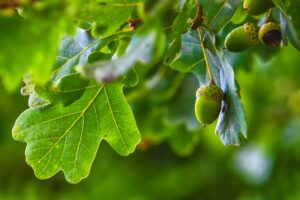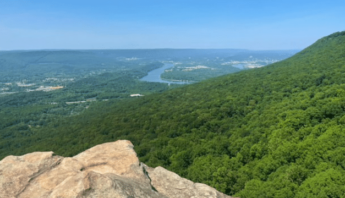Chattanooga is known as the Scenic City for a reason and one of the biggest reasons is all around you, literally. Unlike other medium to big cities, we are surrounded by lush vegetation and trees that provide a spectacular backdrop throughout the summer, fall and spring seasons.
But what are these trees? Let us educate you on the four common trees in the Tennessee Valley and north Georgia area.
1. Oak Trees
 Oak is one of the two most populous tree species in the region. Known for their expansive size, these trees are usually a focal point in a landscape and could have been planted residentially anywhere from 90 to more than 120 years ago.
Oak is one of the two most populous tree species in the region. Known for their expansive size, these trees are usually a focal point in a landscape and could have been planted residentially anywhere from 90 to more than 120 years ago.
This means pruning and attention to healthy roots (i.e. you don’t want to be able to see them above ground) is even more important to ensure they continue to live for hundreds of years more.
Oak trees have single leaf arrangement, similar to the maple we’ll discuss in a second, and primarily belong in one of two families: white or red. You can tell the difference between the two by the leaves, a common defining characteristic of trees in general. Red oaks have points on their leaves whereas white have softer edges to their leaves.
2. Maple Trees
 You can thank the maple for the beautiful fall colors we see in the Tennessee Valley region. Those golden, orange and red leaves that make for so many wonderful pictures during the last months of the year are a credit to the four predominant fairest of maples we have: Red, Silver, Sugar, and Box Elder.
You can thank the maple for the beautiful fall colors we see in the Tennessee Valley region. Those golden, orange and red leaves that make for so many wonderful pictures during the last months of the year are a credit to the four predominant fairest of maples we have: Red, Silver, Sugar, and Box Elder.
To spot these trees outside of the tell-tale fall months, when the green blends in with everything else around it you can turn to your memory of the Canadian flag, which boasts the famous maple leaf front and center.
3. Hemlock Trees
 Hemlock thrive near water and at higher elevations, which means you’ll find them on Signal Mountain, Lookout Mountain, Big Ridge, and primarily outside of the valley itself. Their leaves can provide a great deal of shade for the aquatic wildlife found near streams and lakes by which they grow.
Hemlock thrive near water and at higher elevations, which means you’ll find them on Signal Mountain, Lookout Mountain, Big Ridge, and primarily outside of the valley itself. Their leaves can provide a great deal of shade for the aquatic wildlife found near streams and lakes by which they grow.
Though often confused with pine trees, the needles of a hemlock are flat with white stripes on the underside making them easier to differentiate.
4. Ash Trees
 Also a lover of higher elevations, ash trees have a bark similar to that of hickory trees, but with a different limb arrangement of their branches. Ash tree branches like to work in teams of two. Whatever grows on one side of a branch, a mirror image grows on the other side at that spot giving it what’s known as an “opposite arrangement.”
Also a lover of higher elevations, ash trees have a bark similar to that of hickory trees, but with a different limb arrangement of their branches. Ash tree branches like to work in teams of two. Whatever grows on one side of a branch, a mirror image grows on the other side at that spot giving it what’s known as an “opposite arrangement.”
Their leaves also think “more the merrier” and a single leaf can have five to nine leaflets sprouting from it.
Have a question about a tree on your property? Let’s hear it! Get in touch and one of our arborists can come take a closer look.





